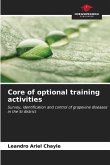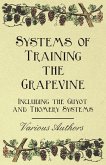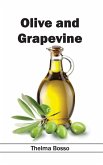Copper-based fungicides have potentially negative effects on soil and water organisms. For this reason, since 2018 the EU authorities have reduced the maximum applicable dose for copper from 6 kg to 4 kg per hectare and year. However, copper is the most effective and most widely used product to controldowny mildew (Plasmopara viticola) in organic viticulture. In recent years, one of the main objectives of organic farming is to replace this natural substance with other more environmentally friendly products. Phosphonate salts are a very interesting class of copper-free fungicides. This work aims to expand the knowledge of phosphonate residues in viticulture and, for a more detailed analysis, a new method using IC-ICP-MS has been validated and a suitable preparation for different matrices has been developed. The analytical approach allowed detecting phosphonate residues both in solid material such as grapevine wood and in liquid matrices such as wine.
Bitte wählen Sie Ihr Anliegen aus.
Rechnungen
Retourenschein anfordern
Bestellstatus
Storno








